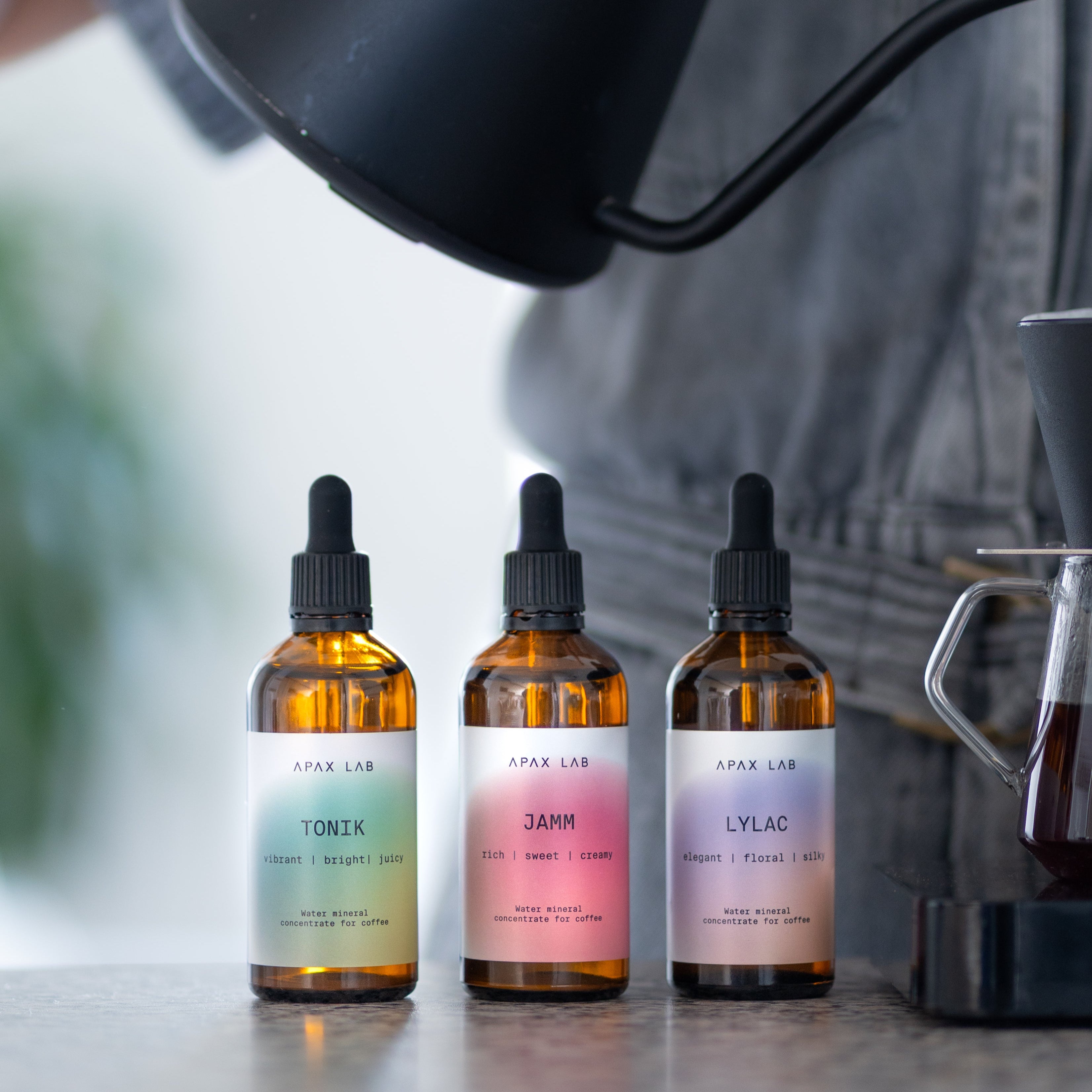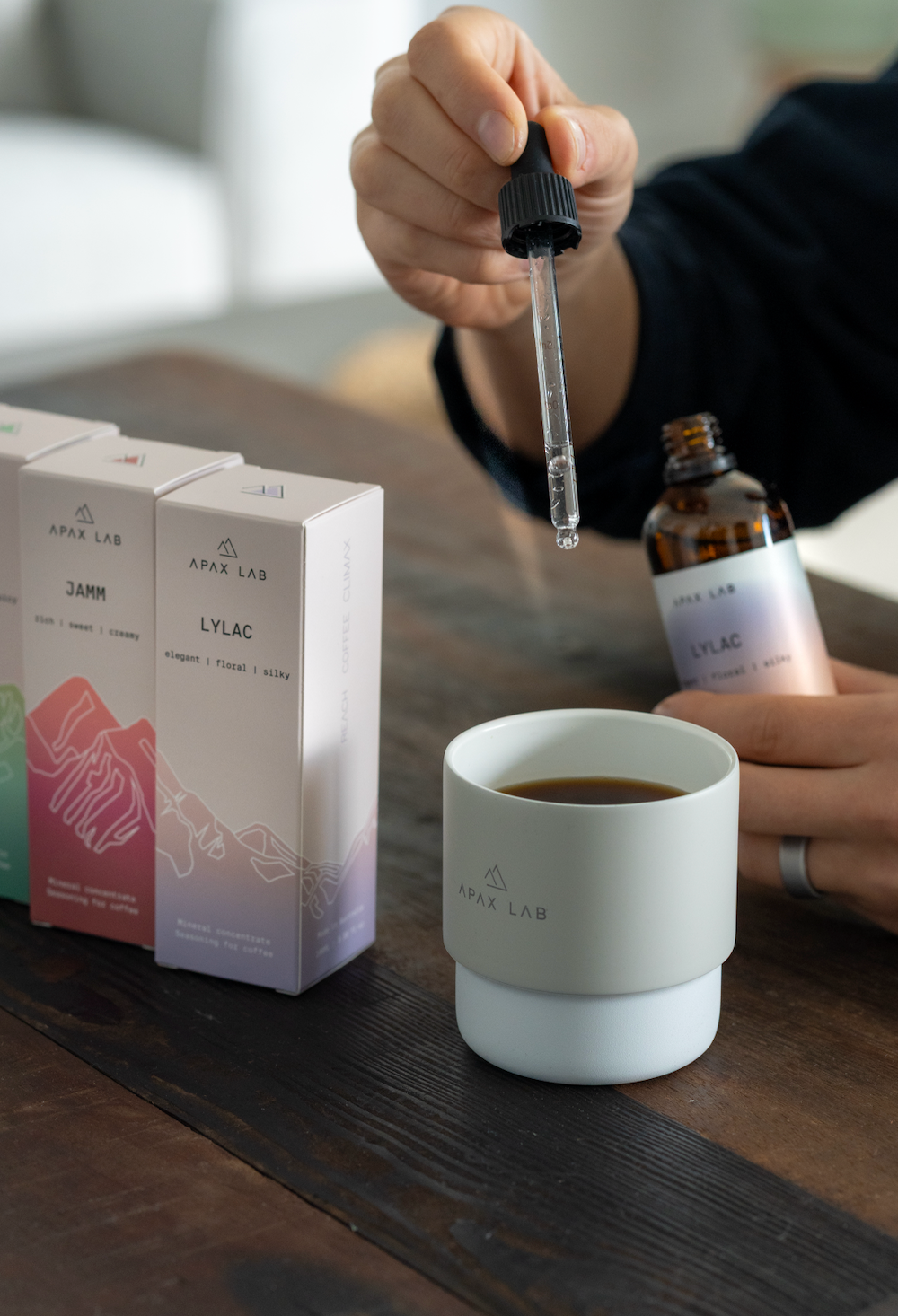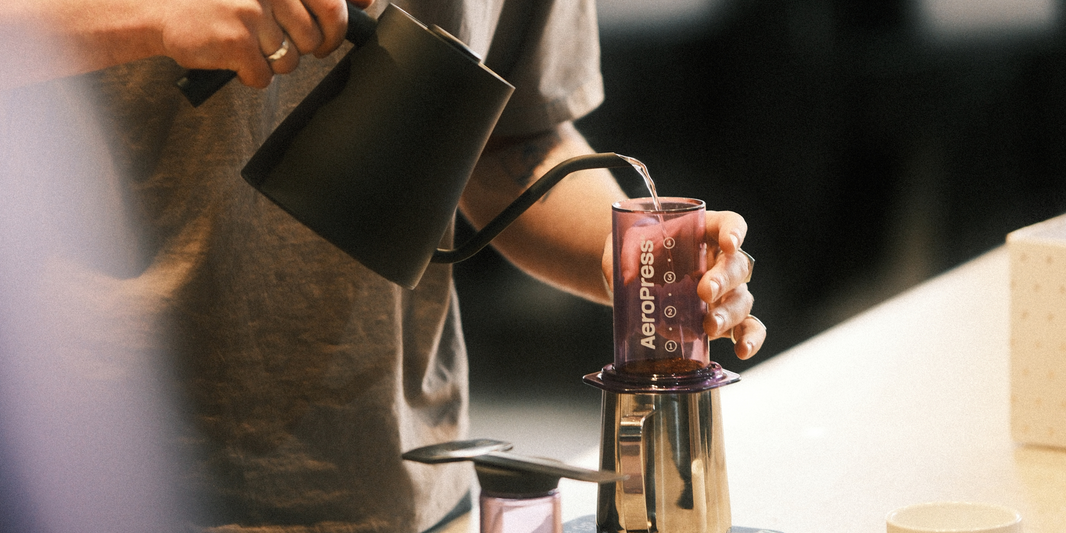When it comes to water for coffee, most people think about temperature, grind size, or brewing time — but the true game changer is how water composition shapes flavour perception.
It’s not that minerals extract more or less from your coffee; it’s that they change how you taste it. The minerals in your brewing water interact with your taste receptors, influencing how you perceive sweetness, acidity, and texture in the cup.
In other words, the best water for coffee doesn’t improve extraction — it enhances perception. It helps your coffee taste more balanced, expressive, and aligned with its roast level.
Roast Profile determines how soluble the coffee is and which flavour compounds dominate. A light roast highlights acidity and aromatics, while a dark roast leans toward caramelised sugars and bitterness. Matching your roast level with the right water mineral content, measured by TDS (total dissolved solids) creates harmony — balancing how the coffee feels.
Roast Profile and Mineralisation
Refer to the graph below to understand how the roast profile of coffee and the mineralisation level influence the attributes in the final cup:

Light Roast Coffee and Hard Water: Results in a Bright, Juicy & Balanced Cup
Light roasts are naturally vibrant, floral, and high in acidity. Without balance, they can taste overly sharp and lack body. Using hard water for coffee — water with a higher mineral content — you get to balance the acidity and make the brew heavier.
Harder brewing water doesn’t extract more flavour — it refines how your palate perceives acidity and sweetness, creating a sense of completeness and balance. The result is a light roast that feels juicy, structured, and sweet instead of thin or sour.
Dark Roast Coffee and Soft Water: Results in a Rich, Full & Balanced Cup
Dark roasts already contain strong caramelised flavours and body. If you brew them with water that’s too hard, they can quickly feel heavy or bitter.
Using soft water for coffee with less minerals (lower TDS) lightens the tactile feel of the cup and lets sweetness and clarity be more present. With fewer minerals amplifying bitterness, the flavour feels smoother and the aftertaste cleaner and the acidity can shine through.
The best water for dark roast coffee has a gentle softness that complements its richness without overemphasising roast intensity.
Why Light + Soft or Dark + Hard Water Can Go Wrong
Pairing a light roast with soft water often results in a cup that tastes thin, sharp, and unstructured. Without enough minerals to moderate acidity, brightness dominates and texture disappears.
Meanwhile, combining a dark roast with hard water can make coffee taste heavy, dry, and overly bitter. The minerals intensify tactile weight and suppress sweetness, leaving an unbalanced, heavy and dry finish.
Balancing Roast Level and Coffee Water TDS
The key is contrast. Lighter coffees feel balanced with harder water; darker coffees thrive with softer water.
- Light roasts: aim for 100–120 ppm for a juicy, vibrant balance.
- Dark roasts: stay around 40–60 ppm for smoothness and rounded sweetness.
By fine-tuning your coffee water TDS to the roast level, you’re not changing extraction — you’re shaping the sensory experience.
The Sauce (Cooking) Analogy
Think of roast and water like food and sauce. The roast is your main dish — naturally full of flavours! The water is the sauce that completes it.
A rich dish needs freshness (dark roast with soft water).
A delicate dish needs structure and intensity (light roast with hard water).
The right pairing of dish and sauce is what brings harmony.
To Conclude
Water is 98% of your brew, yet it’s often the most misunderstood variable. It doesn’t just dissolve flavour compounds — it defines how those compounds feel when they reach your palate.
Our research into water for coffee continues to show that minerals primarily impact perception. They don’t change extraction; they change how the coffee feels and act as tools to help you balance your coffee.






